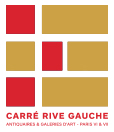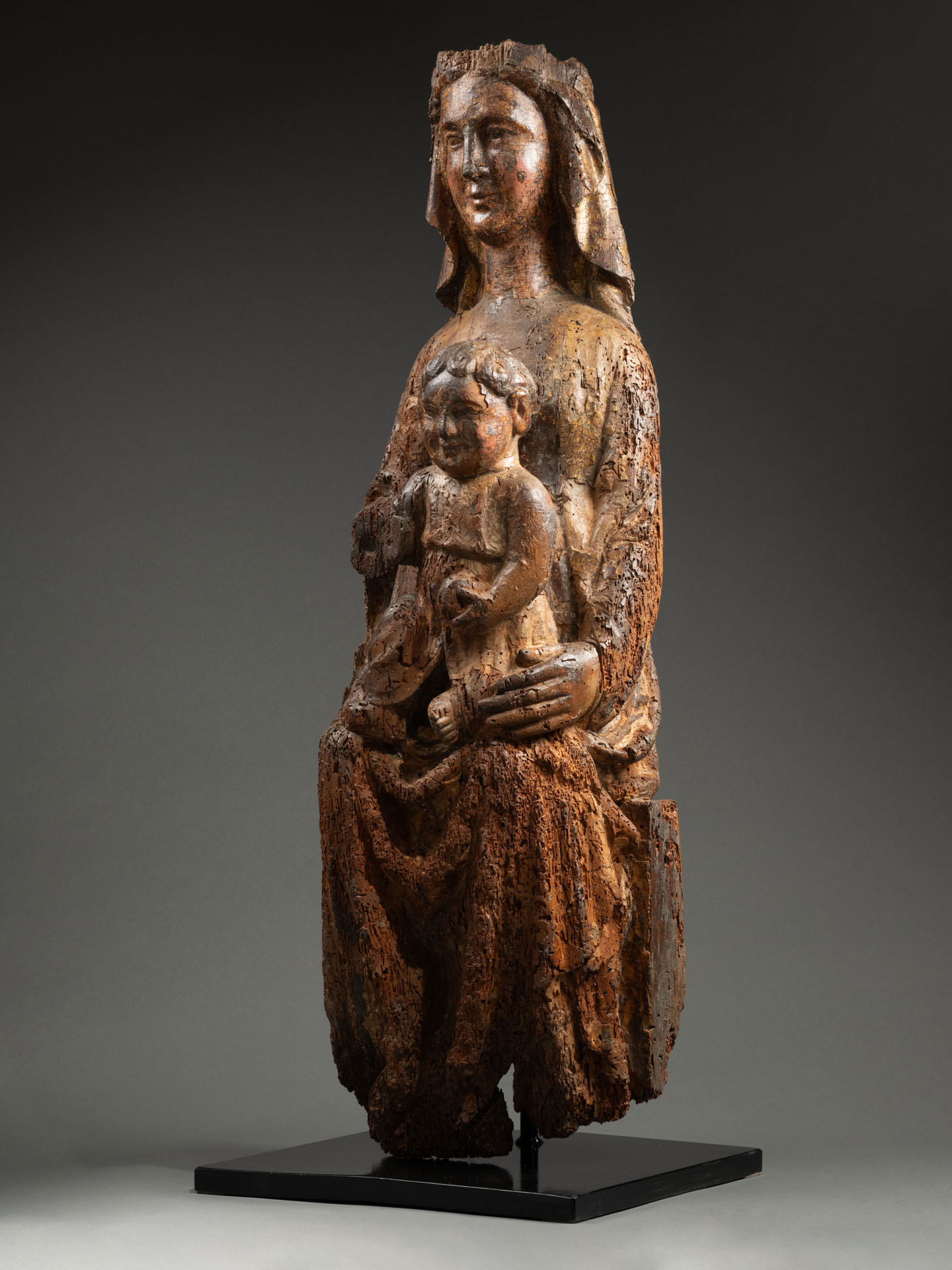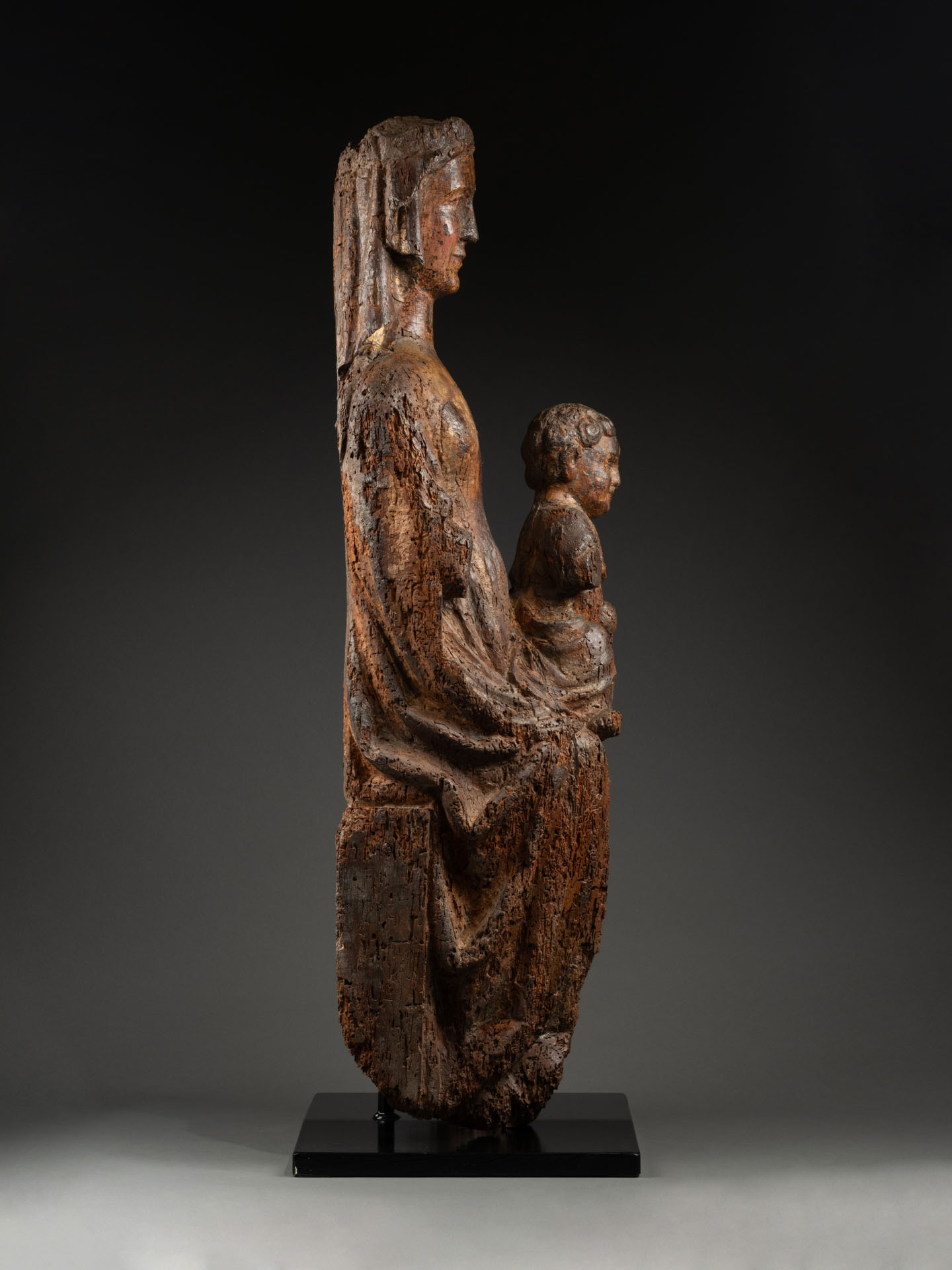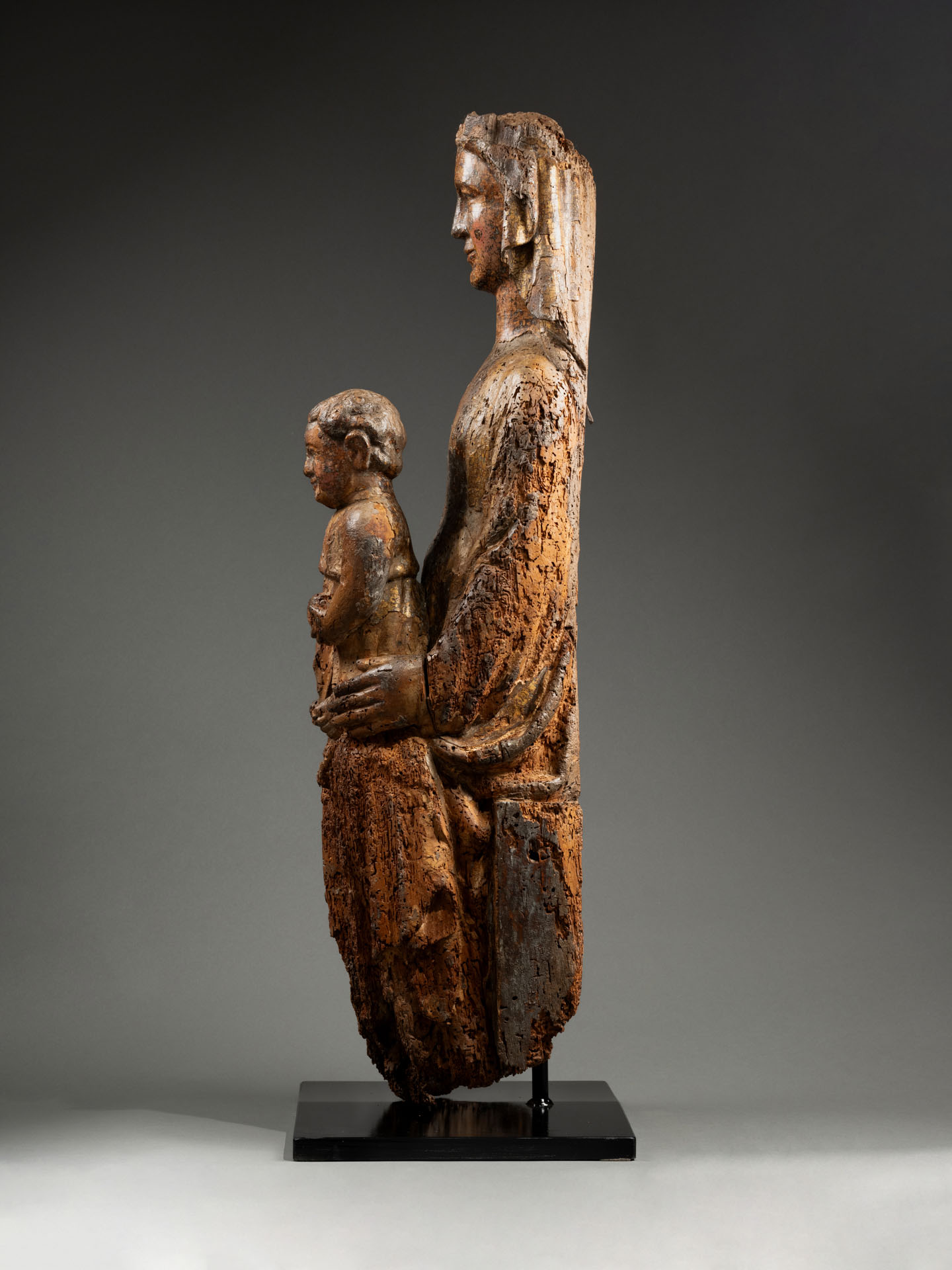Description
Cette magnifique Vierge en Majesté accompagnée de l’Enfant Jésus, arbore une iconographie unique et étonnante. Réalisée en bois de tilleul, cette sculpture surprend par son état de conservation splendide, où les restes de polychromie et de dorure côtoient des bouts de tissus qui laissent entrevoir le marouflage.
Une couronne est posée sur la tête de la Vierge, couverte par un court voile qui dégage son visage. Ce dernier montre les traits doux de Marie, et ses yeux en amande montrent la pupille peinte en noir. Ses lèvres, rehaussées par un léger trait rouge, esquissent un sourire. Ses joues sont pleines, accentuant son air joyeux. On observe quelques traces de polychromie au niveau de son visage rendant les chairs roses à la Vierge.
Elle porte des vêtements longs au drapé lourd et aux plis cassés retombant sur le devant de la sculpture. Son avant-bras droit est manquant et on remarque un trou servant à emboîter les deux parties du bras.
La Vierge est assise sur un trône, son Fils posé sur son genou gauche. Ce dernier arbore la même expression enjouée que sa mère. Ses cheveux bouclés sont rigides, ses yeux sont plissés et ses joues sont rondes rendant son visage bouffi. Sa bouche, menue, est souriante. L’Enfant est vêtu d’un habit simple, une longue tunique à manches courtes. Il est assis en tailleur bien que son pied droit soit levé, créant un mouvement agité des jambes. Son bras droit est, lui aussi, manquant, et on y remarque la même cavité recevant l’avant-bras. Il tient dans sa main gauche un objet rond, une orbe, symbole de sa domination temporelle sur le monde.
L’Enfant Jésus est soutenu par la main gauche de sa mère, puisqu’il penche légèrement en avant, décentré sur son genou. Il est assez probable que la main manquante du Christ effectue le geste d’une bénédiction. L’arrière de la sculpture est évidé.
Cette sculpture correspond au type de la Sedes Sapientiae, signifiant « trône de la sagesse », dans lequel la Vierge Marie trône en portant l’Enfant sur ses genoux, ce dernier pouvant être assis ou debout. La « sagesse » est celle du Christ, et le trône peut donc désigner l’objet ou bien la Vierge, sur lequel trône l’Enfant. Il s’agit d’une expression plus précise du genre de la Vierge en Majesté, thème iconographique important durant l’époque médiévale.
L’oeuvre étonne d’abord par sa taille, puis par les expressions rieuses des deux protagonistes. On retrouve une correspondance au Musée Diocésain de Crémone, en Italie. La Sedes Sapientiae du musée diocésain possède de nombreuses similitudes avec notre oeuvre. Datée du XIVe siècle, elle est attribuée à un sculpteur ombrien. L’expression gaie de la Vierge et du Christ, la posture de l’Enfant, l’orbe qu’Il tient dans la main, les plis lourds cascadant au devant de la sculpture, la tunique du Christ, sont toutes des raisons qui nous laissent à penser que les deux oeuvres sont contemporaines, réalisées par un sculpteur de la région d’Ombrie.
Cette sculpture est empreinte du hiératisme sacré des Vierges en Majesté romanes. Cette rigidité solennelle est ici contrée par l’aspect chaleureux des visages de la Vierge et de l’Enfant.
___________________________
This magnificent Virgin in Majesty, accompanied by the Infant Jesus, boasts a unique and astonishing iconography. Made from limewood, the sculpture is in a splendid state of preservation, with remnants of polychromy and gilding alongside scraps of fabric that reveal the marouflage.
A crown is placed on the Virgin’s head, covered by a short veil that exposes her face. The face shows Mary’s gentle features, and her almond-shaped eyes show a pupil painted black. Her lips, enhanced by a light red line, reveal a smile. Her cheeks are full, accentuating her joyful air. There are a few traces of polychromy on her face, rendering the Virgin’s flesh pink.
She wears long clothes with a heavy drape and broken folds that fall to the front of the sculpture. Her right forearm is missing, and there is a hole where the two parts of the arm fit together.
The Virgin is seated on a throne, with her Son on her left knee. He wears the same playful expression as his mother. His curly hair is stiff, his eyes are crinkled and his cheeks are round, making his face puffy. His small mouth is smiling. The Child is dressed in a simple garment, a long tunic with short sleeves. He sits cross-legged, although his right foot is raised, creating a restless movement of the legs. His right arm, too, is missing, with the same cavity where the forearm used to be. In his left hand, he holds a round object, an orb, symbolizing his temporal dominion over the world.
Baby Jesus is supported by his mother’s left hand, as he leans slightly forward, off-center on his knee. It is quite likely that Christ’s missing hand is performing the gesture of a blessing. The back of the sculpture is hollowed out.
This sculpture corresponds to the Sedes Sapientiae type, meaning “throne of wisdom”, in which the Virgin Mary is enthroned with the Child on her lap, who may be seated or standing. Wisdom” is Christ’s wisdom, so the throne can refer to the object or the Virgin on which the Child is enthroned. This is a more precise expression of the Virgin in Majesty genre, an important iconographic theme in medieval times.
The work is astonishing first for its size, then for the laughing expressions of the two protagonists. A match can be found in the Diocesan Museum in Cremona, Italy. The Diocesan Museum’s Sedes Sapientiae bears many similarities to our work. Dated to the 14th century, it is attributed to an Umbrian sculptor. The cheerful expression of the Virgin and Christ, the Child’s posture, the orb He holds in His hand, the heavy folds cascading down the front of the sculpture, Christ’s tunic, all lead us to believe that the two works are contemporary, created by a sculptor from the Umbria region.
This sculpture is imbued with the sacred hieraticism of the Romanesque Majesty Virgins. This solemn rigidity is countered here by the warmth of the faces of the Virgin and Child.




